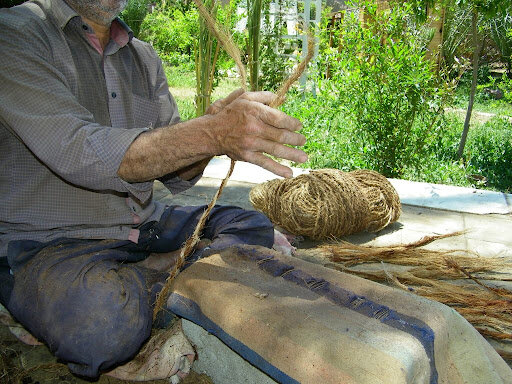Neglected craft of Manal-bafi revived in Bafq

TEHRAN – Manal-bafi, a fairly forgotten field of traditional wickerwork in Bafq, has been recently revived in the central Iranian city, Bafq’s tourism chief has announced.
As soon as the art of Manal-bafi was registered on the National Intangible Cultural Heritage list, handicraft artists in the city in this field created new products in order to keep the art alive and make more use of it, Leili Ranjbar said on Thursday.
Manal-bafi is one of the handicrafts fields which uses palm tree fibers, and due to Bafq’s reputation as a date-growing region, it has been popular only in that region, the official added.
Bafq’s artisans are trying to revive this field by combining other handicrafts of the city with the art, to produce new and practical objects, she noted.
With 14 entries, Iran ranks first globally for the number of cities and villages registered by the World Crafts Council, as China with seven entries, Chile with four, and India with three ones come next.
The value of Iran’s handicrafts exports stood at $120 million during the first eleven months of the past Iranian calendar year 1399 (March 20, 2020 – February 18, 2021), Mehr reported. The country’s handicrafts exports slumped during the mentioned months in comparison to the same period last a year earlier due to the damage the coronavirus pandemic has inflicted on global trade.
The Islamic Republic exported $427 million worth of handicrafts during the first eleven months of the calendar year 1398. Of the figure, some $190 million was earned via suitcase trade (allowed for customs-free and tax-free transfer) through 20 provinces, according to data compiled by the Ministry of Cultural Heritage, Tourism and Handicrafts.
Ceramics, pottery vessels, handwoven cloths as well as personal ornamentations with precious and semi-precious gemstones are traditionally exported to Iraq, Afghanistan, Germany, the U.S., the UK, and other countries.
ABU/AFM

Leave a Comment